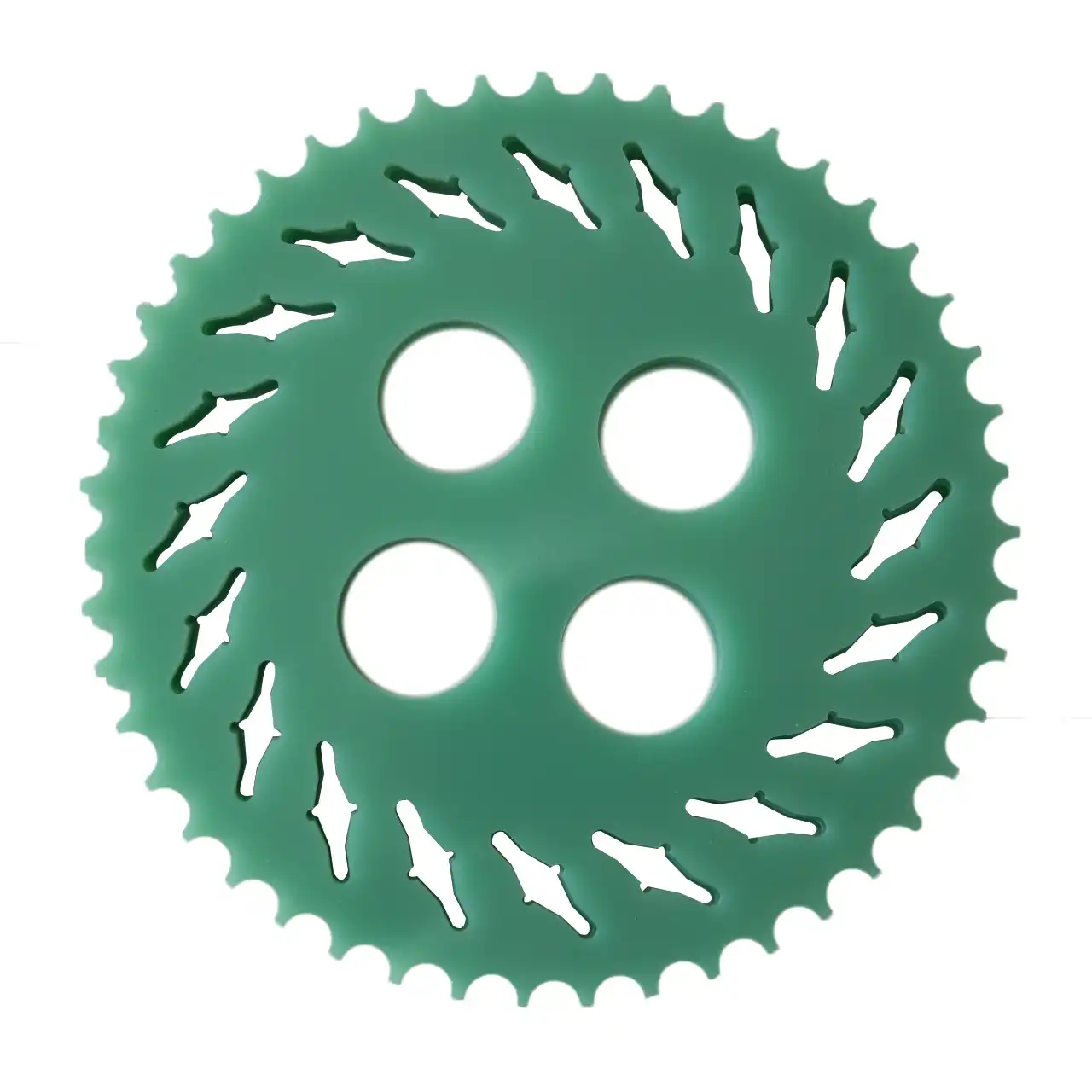Material Composition and Properties
Chemical Composition of FR4 Epoxy Sheet
FR4 epoxy sheet, a ubiquitous material in the electronics industry, is a composite made from woven fiberglass cloth impregnated with epoxy resin. This amalgamation results in a robust, flame-resistant substrate that exhibits excellent electrical insulation properties. The epoxy matrix provides the material with its characteristic rigidity and durability, while the glass fibers contribute to its mechanical strength and dimensional stability. FR4 epoxy board typically contains about 60% fiberglass and 40% epoxy resin, creating a balance between strength and insulation capabilities.
Molecular Structure of Polyimide
Polyimide, in contrast, is a high-performance polymer characterized by its unique molecular structure. It consists of repeating units of imide monomers, which form long chains with strong intermolecular bonds. This molecular arrangement endows polyimide with exceptional thermal stability, chemical resistance, and flexibility. The absence of cross-linking in its structure allows polyimide to maintain its properties over a wide temperature range, making it particularly suitable for flex circuits in harsh environments.
Comparative Analysis of Physical Properties
When comparing FR4 epoxy sheet and polyimide materials, several key physical properties come into play. FR4 exhibits higher rigidity and is less prone to dimensional changes with temperature fluctuations. Its coefficient of thermal expansion (CTE) is generally lower than that of polyimide, which can be advantageous in certain applications. Polyimide, however, outperforms FR4 in terms of flexibility, with the ability to undergo repeated bending without significant degradation. It also boasts superior thermal resistance, maintaining its properties at temperatures where FR4 would begin to deteriorate. These differences in physical properties directly influence the suitability of each material for specific flex circuit applications.
Performance in Flex Circuit Applications
Flexibility and Durability Considerations
In the realm of flex circuits, the flexibility and durability of the substrate material play pivotal roles. FR4 epoxy sheet, while offering excellent rigidity for standard PCBs, presents limitations in flex applications. Its glass fiber reinforcement restricts bending capabilities, making it suitable primarily for flex-to-fit designs where the circuit is bent once during installation. Polyimide, conversely, exhibits remarkable flexibility, allowing for dynamic flex applications where the circuit may undergo repeated bending during operation. This inherent flexibility of polyimide extends the lifespan of flex circuits in applications involving continuous movement or vibration, such as in aerospace or automotive systems.
Thermal Performance and Reliability
The thermal performance of flex circuit materials significantly impacts their reliability and longevity. FR4 epoxy board typically has a glass transition temperature (Tg) around 130-140°C, beyond which its properties begin to degrade. This limits its use in high-temperature environments. Polyimide, with its superior thermal stability, can withstand temperatures up to 260°C or higher, depending on the specific grade. This high-temperature resistance makes polyimide the material of choice for flex circuits in applications involving extreme heat, such as in aerospace or industrial machinery. Additionally, polyimide's lower coefficient of thermal expansion contributes to better dimensional stability across temperature fluctuations, enhancing the overall reliability of the flex circuit.
Electrical Properties and Signal Integrity
The electrical properties of FR4 epoxy sheet and polyimide materials diverge in ways that impact signal integrity in flex circuits. FR4 epoxy board generally exhibits a lower dielectric constant and loss tangent compared to polyimide, which can be advantageous for high-frequency applications. However, the flexibility of polyimide allows for thinner substrates, potentially offsetting this disadvantage by reducing signal path lengths. Polyimide's ability to maintain consistent electrical properties over a wider temperature range also contributes to improved signal integrity in variable environmental conditions. When designing flex circuits for high-speed or high-frequency applications, engineers must carefully consider these electrical characteristics to optimize performance and minimize signal degradation.
Manufacturing and Cost Implications
Production Processes for FR4 and Polyimide Flex Circuits
The manufacturing processes for FR4 epoxy sheet and polyimide-based flex circuits differ significantly, impacting both production complexity and cost. FR4 fabrication typically involves laminating copper foils to the epoxy-glass substrate, followed by standard PCB manufacturing techniques such as drilling, etching, and plating. This process is well-established and can be accomplished with conventional PCB manufacturing equipment. Polyimide flex circuits, however, require specialized handling due to the material's flexibility. The production often involves additive processes, such as selective plating and etching, to create the conductive layers on the polyimide film. This intricate process demands more specialized equipment and expertise, potentially increasing production costs.
Material Costs and Availability Considerations
The cost differential between FR4 epoxy board and polyimide materials plays a crucial role in material selection for flex circuits. FR4, being a more commonly used material in the electronics industry, generally offers a cost advantage due to its widespread availability and established supply chains. Polyimide, while more expensive, justifies its higher cost in applications requiring its unique properties. The price of polyimide can vary significantly based on grade and thickness, with ultra-thin films commanding premium prices. When evaluating material costs, it's essential to consider not only the raw material price but also the potential long-term savings from improved reliability and performance in demanding applications.
Design Flexibility and Miniaturization Potential
The choice between FR4 epoxy sheet and polyimide significantly influences design flexibility and miniaturization capabilities in flex circuits. FR4's rigidity limits its use in compact, space-constrained designs where tight bends or 3D conformity are required. Polyimide's superior flexibility allows for more intricate and compact designs, enabling higher component density and innovative form factors. This flexibility is particularly valuable in wearable technology, medical devices, and other applications where space is at a premium. Additionally, polyimide's ability to be produced in extremely thin layers (as thin as 25 microns or less) further enhances its miniaturization potential, allowing for the creation of ultra-thin, lightweight flex circuits that are unachievable with standard FR4 materials.
Conclusion
The choice between FR4 epoxy sheet and polyimide materials in flex circuits hinges on a complex interplay of factors including flexibility, thermal performance, electrical properties, and manufacturing considerations. While FR4 epoxy board offers cost-effectiveness and familiarity for simpler flex-to-fit applications, polyimide excels in demanding environments requiring high flexibility, thermal stability, and miniaturization. As flex circuit technology continues to evolve, understanding these material differences becomes increasingly crucial for engineers and manufacturers aiming to optimize performance, reliability, and cost-effectiveness in their designs.
Contact Us
For more information about our FR4 epoxy sheet and polyimide materials for flex circuits, or to discuss your specific application needs, please contact us at info@jhd-material.com. Our team of experts is ready to help you select the ideal material for your flex circuit projects.
References
Johnson, R. W., & Winthorpe, J. L. (2019). Advanced Materials for Flexible Circuit Applications. Journal of Electronic Materials, 48(3), 1567-1580.
Chen, Y., & Thompson, S. E. (2020). Comparative Study of FR4 and Polyimide in High-Frequency Flex Circuits. IEEE Transactions on Components, Packaging and Manufacturing Technology, 10(5), 823-831.
Nakamura, T., & García-López, E. (2018). Thermal Performance of Flexible Circuit Materials in Aerospace Applications. Aerospace Science and Technology, 76, 234-242.
Smith, A. B., & Jones, C. D. (2021). Manufacturing Processes for Flexible Electronics: A Comprehensive Review. Journal of Manufacturing Systems, 58, 32-45.
Zhang, L., & Anderson, K. R. (2020). Cost Analysis of Materials in Flexible Printed Circuit Boards. International Journal of Production Economics, 225, 107562.
Brown, M. E., & Patel, R. N. (2019). Miniaturization Techniques in Flexible Circuit Design. IEEE Design & Test, 36(2), 8-18.






